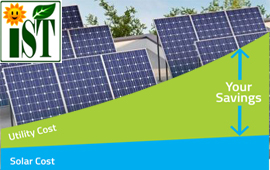A novel technology that can improve the efficiency of quantum dot solar cells to 11.53% has been unveiled. Published in the February 2020 issue of Advanced Energy Materials, it has been evaluated as a study that solved the challenges posed by the generation of electric currents from sunlight by solar cells by enhancing the hole extraction.
A research team, led by Professor Sung-Yeon Jang in the School of Energy and Chemical Engineering at UNIST has developed a photovoltaic device that maximizes the performance of quantum dot solar cells by using organic polymers.
Solar cells use a characteristic of which electrons and holes are generated in the absorber layer. The free free electrons and hole then move through the cell, creating and filling in holes. It is this movement of electrons and holes that generate electricity. Therefore, creating multiple electron-hole pairs and transporting them are an important consideration in the design of efficient solar cells.
Generally, quantum dot solar cells combine electron-rich quantum dots (n-type CQDs) and hole-rich quantum dots (p-type QDs). In this work, the research team developed organic π‐conjugated polymer (π‐CP) based HTMs, which can achieve performance superior to that of state‐of‐the‐art HTM, p‐type CQDs. The molecular engineering of the π‐CPs alters their optoelectronic properties, and the charge generation and collection in colloidal quantum dot solar cells (CQDSCs), using them are substantially improved.
As a result, the research team succeeded in achieving power conversion efficiency (PCE) of 11.53% with decent air‐storage stability. This is the highest reported PCE among CQDSCs using organic HTMs, and even higher than the reported best solid‐state ligand exchange‐free CQDSC using pCQD‐HTM. "From the viewpoint of device processing, device fabrication does not require any solid‐state ligand exchange step or layer‐by‐layer deposition process, which is favorable for exploiting commercial processing techniques," noted the research team.
 Certificate in Rooftop Solar Project In rooftop solar sector a small entrepreneur needs a strong knowledge about off-Grid, On grid, hybrid system designing and financial benefit, bankable report preparation. This course will cover all aspect of designing and procurement, installation, financial modelling and customer nogotiation skills.
Certificate in Rooftop Solar Project In rooftop solar sector a small entrepreneur needs a strong knowledge about off-Grid, On grid, hybrid system designing and financial benefit, bankable report preparation. This course will cover all aspect of designing and procurement, installation, financial modelling and customer nogotiation skills.
